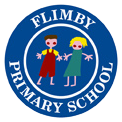Feedback
Children should not doodle, scribble or otherwise on or in their books.
Worksheets should be kept to a minimum. Where worksheets are used, they should be cut where possible to neatly fit onto one page of an exercise book (not folded or overlapping centre of book, and no edges sticking out from book). They should also be printed in black and white ink unless it’s absolutely necessary that they are in colour.
No child should scribble out mistakes in their books. If they are using pencil they will be allowed an eraser to rub out any mistakes made. Children using pen should put one neat line through any mistakes they make (using a ruler if the mistake is multiple words on the same line or brackets).
Maths Books
Marking
All sums children complete should be marked with either a tick or a cross. Any comments/feedback written in maths books should be relevant to the lesson’s learning objective and/or provide feedback to help the child improve their work next time. The E,D,S and M notation should be written beside comments.
Teacher comments should be written neatly on the lines. Any numbers written backwards should be corrected by the teacher.
Presentation
Children should write one digit per square to ensure that place value of numbers is clear when completing sums and also to keep work neatly laid out.
English Books
Marking
When marking Literacy work, the comments made should be relevant to the focus of the lesson identifying what the child has done well and what they could improve on next time. Comments can also be made relating to the child’s writing targets where appropriate; such as ‘Remember your target is to use a variety of connectives in your writing.’ The E,D,S and M notation should be written beside comments.
Teacher comments should be written neatly on the lines.
Where spelling mistakes are made (high frequency words or teacher’s discretion of what a child should know), teachers should underline these words and write them correctly in the margin so children can see how they should be spelt. It is not necessary to correct every spelling mistake, usually 3 are highlighted.
All feedback given to pupils should be written neatly on the lines underneath children’s work. Pupils may get challenges to complete.
Extended written pieces
Pupils will be given time to edit and improve extended writing. These will often be assessed using suitable checklists or the assessment frameworks required in Year 2 and 6.
Presentation
In English, children should write the long date on top line of a page/piece of work, underlining it with a ruler.
As with maths, if children haven’t completed the majority of a page in previous work, they should leave an empty line, rule off that work and continue on that page.
All English books should have a margin on left hand side of every page. Children should be taught to start writing from the margin on each line (unless told otherwise due to text type being taught).
Self-Assessment
Pupils in Key Stage Two will self-assess their learning using the criteria of the assessment system. They can describe themselves as being emerging, developing, secure or at mastery by using the initial letters.
Pupils in KS1 or with SEN may use a smiling or sad face to describe their feelings about a particular lesson.


 Methodology
Methodology

